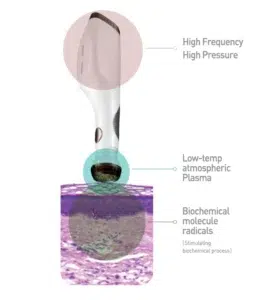What is Xanthelasma?
Xanthelasma, characterized by yellow growths around the eyes, is a condition where cholesterol deposits accumulate under the skin. Xanthelasma, also known as xanthelasma palpebrarum (XP), is a distinctive manifestation that frequently appears near the corners of the eyelids adjacent to the nose. Xanthelasma is often associated with various health indicators, including diabetes, high cholesterol, and thyroid issues.
Xanthelasma is a skin concern many people are unaware of or goes undiagnosed. Characterised by yellowy bumpy patches around the corner of the eyes and on the eyelids, Xanthelasma is a soft, fatty deposit that forms under the skin. Even though it is rare, the skin concern is more common in woman than men in their 40’s & 50’s. Neither painful nor harmful, however it can be the sign of an underlying health condition. Before coming into the clinic, we advise you to go to GP prior to have this checked, as well as having your bloods checked.
For those affected by Xanthelasma, understanding its implications is crucial. Xanthelasma, while harmless in itself, can serve as a visual sign of underlying conditions. Xanthelasma’s presence may suggest a need for closer monitoring of heart health, especially since it is linked to potential future issues like heart disease, heart attack, and atherosclerosis.
Diagnosis of Xanthelasma?
The diagnosis of Xanthelasma is straightforward, typically requiring a visual examination by a healthcare provider. Tests may be recommended to check cholesterol levels, thyroid function, blood sugar, and liver function. When it comes to Xanthelasma, awareness of associated risk factors is vital. Factors such as being assigned female at birth, being overweight, using tobacco products, having diabetes, high blood pressure, or a family history of high cholesterol or Xanthelasma can contribute to its occurrence.
Addressing Xanthelasma often involves its removal by a healthcare provider. The preferred method for Xanthelasma removal is often liquid nitrogen cryotherapy. Other options include surgery, laser surgery, radiofrequency ablation, chemical peel, and extreme heat treatments. It’s important to note that Xanthelasma treatments may have side effects, including skin color changes, scars, pain, and eyelid alterations.
Symptoms of Xanthelasma.
- Yellowy/off white fatty deposits in the corner of the eye or on the eyelids.
- Vary in shapes and sizes.
- Raised, soft bumps.
Sometimes Xanthelasma can go misdiagnosed as Milia (Please see skin concern page on Milia), both have similar characteristics however are very different in diagnosis.
What can we do to help?
For the majority of cases, Xanthelasma is completely harmless. However due to its appearance it may be something you decide you want to have removed. Unfortunately the skin concern will not disappear overtime but may increase in size at a steady rate.
We have a variety of in non-invasive Xanthelasma removal treatments including Electrolysis and Plasma Non-Surgical. Using an ionised gas, Plasma removes all organic matter from the surface of the skin. Please see our treatment page on Plasma Non-Surgical for further information on this treatment. Xanthelasma removal treatment is both extremely effective and non-invasive with minimal treatment sessions required.
Prior your both treatments we will carry out a full complimentary skin consultation with analysis to discuss the best treatment for you. Although it is an uncommon skin concern, here at FTT our advanced practitioners are here to help, guide & advise you through your skin concerns treatment plan. If you are concerned about having Xanthelasma or unsure of what it may be, please book an appointment with your GP prior coming into clinic.
While Xanthelasma doesn’t pose an immediate health risk, seeking timely treatment is essential for those concerned about its appearance. Regular follow-up appointments after Xanthelasma removal are recommended, providing an opportunity for healthcare providers to monitor recovery and address any side effects.
Additionally, individuals with Xanthelasma are encouraged to adopt heart-healthy practices, as directed by their healthcare providers, to mitigate potential future health issues. In essence, Xanthelasma, though primarily a cosmetic concern, warrants attention and proactive management for overall well-being.


